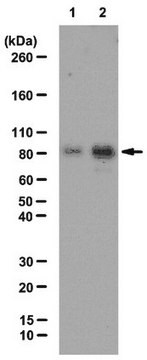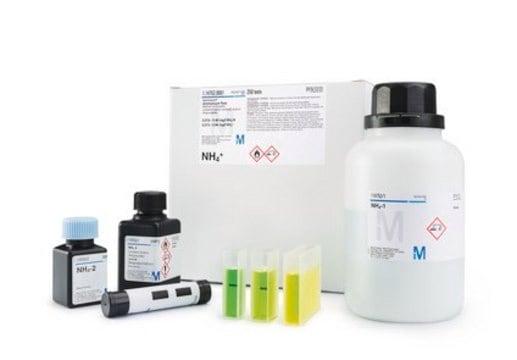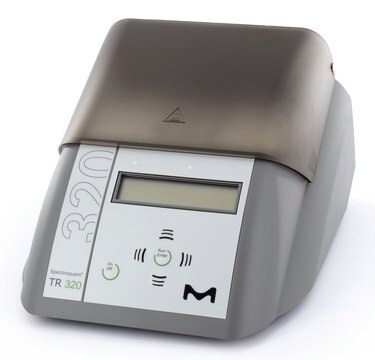ABT1378
Anti-Acetyl Cortactin (Lys309)
from rabbit
Synonim(y):
Amplaxin, Oncogene EMS1, Src substrate cortactin
About This Item
Polecane produkty
pochodzenie biologiczne
rabbit
Poziom jakości
forma przeciwciała
affinity isolated antibody
rodzaj przeciwciała
primary antibodies
klon
polyclonal
reaktywność gatunkowa
monkey
reaktywność gatunkowa (przewidywana na podstawie homologii)
human (based on 100% sequence homology)
metody
immunofluorescence: suitable
western blot: suitable
numer dostępu NCBI
numer dostępu UniProt
Warunki transportu
ambient
docelowa modyfikacja potranslacyjna
acetylation (Lys309)
informacje o genach
human ... CTTN(2017)
Opis ogólny
Specyficzność
Immunogen
Zastosowanie
Cell Structure
Western Blotting Analysis: A representative lot detected Acetyl Cortactin (Lys309) in transfected COS-7 cells (Ito, A., et. al. (2015). Sci Signal. 8(404):ra120).
Immunofluorescence Analysis: A representative lot detected Acetyl Cortactin (Lys309) in COS-7 cells treated with or without Trichostatin and Nicotinamide (Ito, A., et. al. (2015). Sci Signal. 8(404):ra120).
Jakość
Western Blotting Analysis: A 1:1,000 dilution of this antibody detected Src substrate cortactin in lysates from COS-7 cells stimulated with Trichostatin (1 mM) and Nicotinamide (5 mM).
Opis wartości docelowych
Postać fizyczna
Przechowywanie i stabilność
Handling Recommendations: Upon receipt and prior to removing the cap, centrifuge the vial and gently mix the solution. Aliquot into microcentrifuge tubes and store at -20°C. Avoid repeated freeze/thaw cycles, which may damage IgG and affect product performance.
Inne uwagi
Oświadczenie o zrzeczeniu się odpowiedzialności
Nie możesz znaleźć właściwego produktu?
Wypróbuj nasz Narzędzie selektora produktów.
Kod klasy składowania
10 - Combustible liquids
Klasa zagrożenia wodnego (WGK)
WGK 2
Certyfikaty analizy (CoA)
Poszukaj Certyfikaty analizy (CoA), wpisując numer partii/serii produktów. Numery serii i partii można znaleźć na etykiecie produktu po słowach „seria” lub „partia”.
Masz już ten produkt?
Dokumenty związane z niedawno zakupionymi produktami zostały zamieszczone w Bibliotece dokumentów.
Nasz zespół naukowców ma doświadczenie we wszystkich obszarach badań, w tym w naukach przyrodniczych, materiałoznawstwie, syntezie chemicznej, chromatografii, analityce i wielu innych dziedzinach.
Skontaktuj się z zespołem ds. pomocy technicznej







